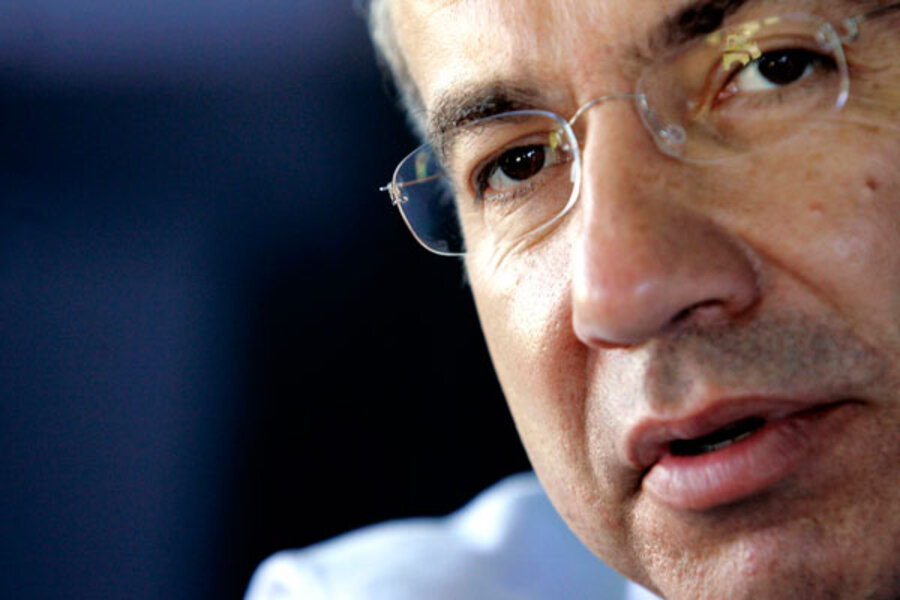As Peña Nieto prepares to take office in Mexico, a look back at Calderón's presidency
Loading...
• A version of this post ran on the author's blog, bloggingsbyboz.com. The views expressed are the author's own.
If you had been told on President Felipe Calderón's first day in office that murders would double and the PRI would return to power, you would have defined his administration as a failure. While his supporters would like to tell a more complex and detailed narrative, his legacy will be based on those two negative results. (Read The Christian Science Monitor's full story on Calderón's legacy here.)
In the early weeks of his administration, Calderón made an operational decision to deploy military units to fight the drug cartels. I say operational, because the decision certainly wasn't strategic. There was no strategy for victory, no vision of what "winning" would look like or what resources and reforms would be needed to achieve victory. In fact, Calderón did not even release a security strategy until mid-2010, over three years after he deployed his first military units.
Calderón may have had good intentions when going on the offensive against the criminal groups. The president was certainly correct that the criminal influence in society was unsustainable and needed to be combated. The Mexican security situation in 2006 was far from ideal. There may have been good reasons to use the military. However, the results from 2006-2012 didn't match the good intentions. The results were tens of thousands additional dead, disappeared and displaced.
RELATED: Think you know Mexico? Take our quiz!
The first 3-4 years of Calderón's security policies were a disaster. The final two years saw some improvements, but from a much lower baseline. I think Mexico is improving today and they are implementing a good strategy, including police, judicial, and prison reform, but Calderón's policies should be measured over the whole six years. If you compare the security situation of where Mexico was in 2006 to today, it's not a good picture. The new president has set a goal of simply returning to the levels of violence that existed before Calderón was elected and analysts question if that is achievable given the damage done over the past six years.
That's not to say it's been a good six years for the criminal groups. It's been terrible for them too. Several large criminal organizations have been taken down. The majority of criminal leadership has been arrested or killed. The bad guys are not winning either. Mexico has seen a war of attrition with both sides losing and the civilian population caught in between taking the worst of the damage.
There are things I like about Calderón, things I think he did correct, and policy reforms I think the next president should continue. However, Calderón's legacy will be that he fought a war without a strategy to win. Murders doubled and the PRI is back in power. It's that simple.
– James Bosworth is a freelance writer and consultant who runs Bloggings by Boz.







